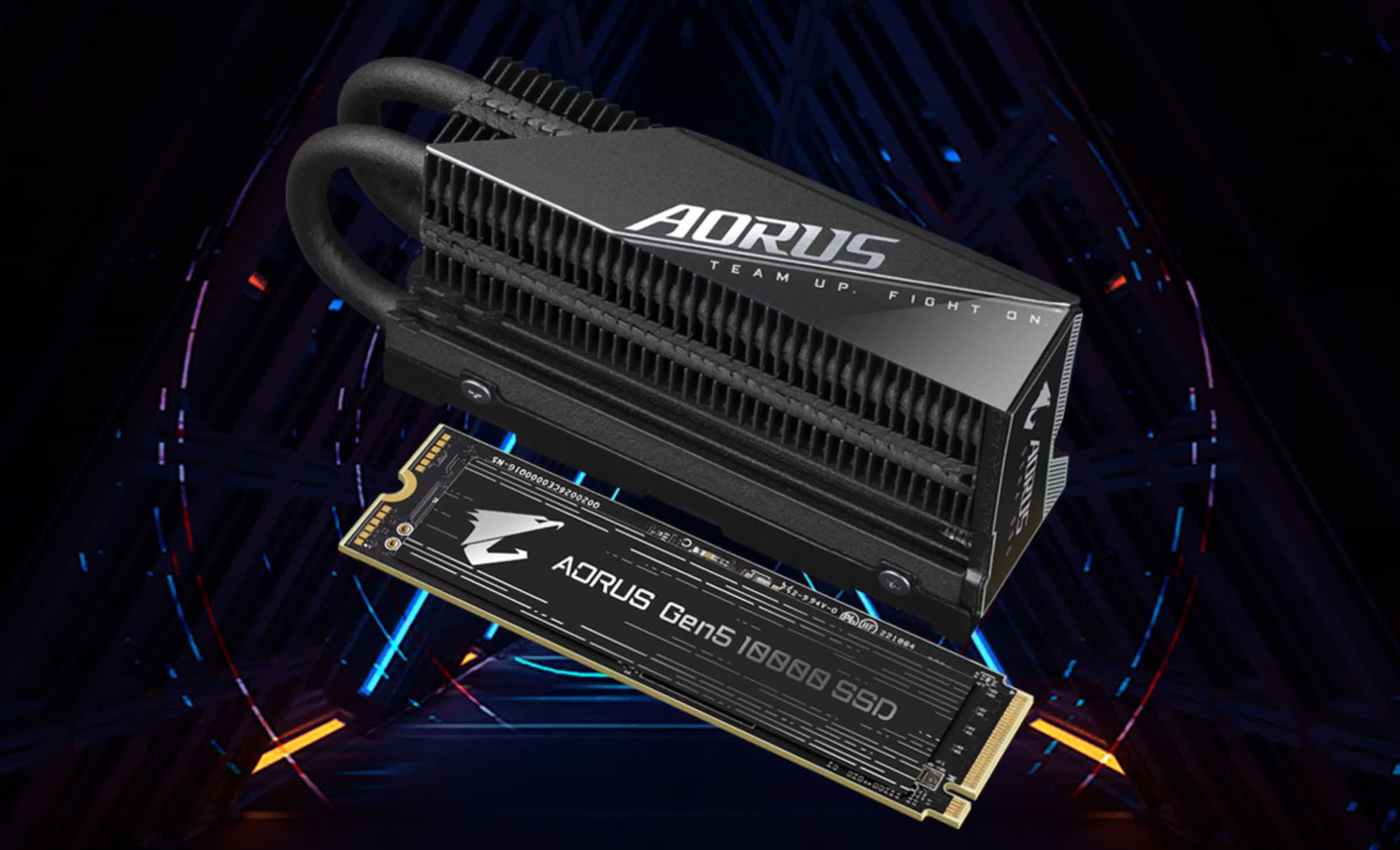In a nutshell: Aftermarket cooling solutions for storage drives have existed for years - decades, even - but they haven't been deemed borderline necessary until recently with the advent of high-end solid-state drives. Gigabyte's new Aorus Gen5 10000 SSD is a prime example.
The M.2 2280 drive is powered by a Phison E26 controller with PCIe Gen 5.0 x4 support and runs 232-layer 3D TLC NAND flash, presumably from Micron. Available in 1TB and 2TB storage options, the larger-capacity drive boasts sequential read speeds up to 10,000 MB/s and sequential writes up to 9,500 MB/s. The 1TB variant, meanwhile, is rated for sequential read speeds of up to 9,500 MB/s and sequential write speeds of up to 8,500 MB/sec.
Gigabyte said both are designed specifically for enthusiasts, gamers and rendering pros.
The drive measures 80mm x 22mm x 2.3mm but those measurements increase to 92mm x 23.5mm x 44.7mm when you attach the optional cooler.
Dubbed the M.2 Thermal Guard Extreme with Nanocarbon coating, the passive heatsink is comprised of two heatpipes with stacked rows of fins. It is applied using a dual side, high conductivity thermal pad and according to Gigabyte, is best paired with an AIO CPU cooler.

Gigabyte has published a list of incompatible boards for further reference.
A large, passive cooler like Gigabyte's could reduce or eliminate thermal throttling and lead to a longer and healthier life for your solid-state drive. There isn't really a solid argument for not using additional cooling on a piece of hardware like this that's known to get toasty under load, so long as your setup physically has enough room to accommodate it. If it were me, I'd also ensure proper case cooling to be sure any nearby warm air gets escorted out of the chassis ASAP.
Gigabyte's 2TB drive carries a mean time between failure rating of 1.6 million hours and comes backed by a five-year warranty or 1,400 terabytes written, whichever comes first. No word yet on potential availability or target pricing.
